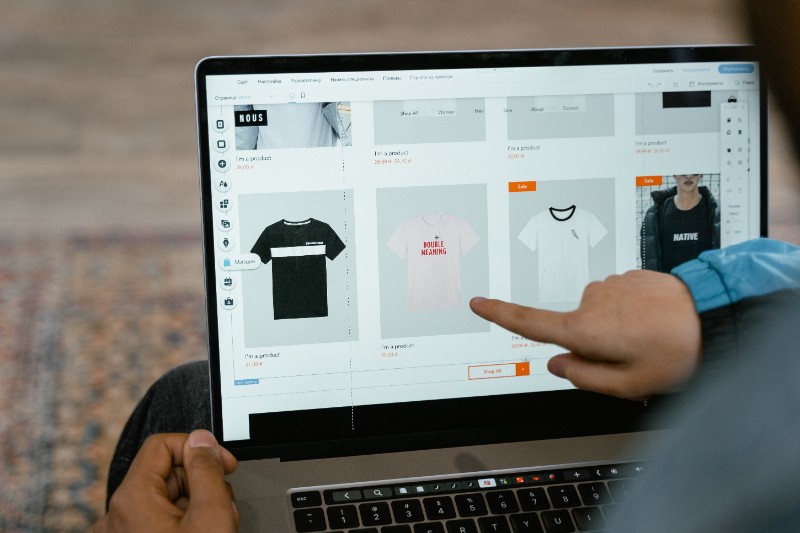The internet has revolutionized how people buy and sell items, providing a global marketplace for individuals and businesses. Selling things online has become increasingly popular for those looking to declutter their homes, sell stuff off, make extra cash, or even start a full-fledged business. With a wide range of platforms available, there’s an opportunity for sellers of all types to find their niche and make a profit.
Navigating the world of online selling can be overwhelming initially, with the sheer number of options for selling sites and strategies available. But, with some research and planning, even the most novice sellers can succeed in this ever-growing market. Some popular platforms to consider when starting your online selling journey include eBay, Mercari, Etsy, and OfferUp, each catering to different products and audiences.
As we delve into this adventure, we will explore the varied world of a range of online selling sites, discussing the benefits of each platform and the strategies one can employ to make their online selling experience successful. By delving into these topics, we aim to provide a comprehensive guide for beginners looking to enter the online marketplace and seasoned sellers looking to expand their knowledge.

Amazon is the largest ecommerce marketplace in the United States, with over 6 million marketplace sellers and more than 214 million U.S. shoppers per month. In 2019 alone, the marketplace reportedly sold 4,000 items per minute. Some benefits of selling on Amazon include:
But, sellers who want to sell there should also consider the competition and possible fees associated with selling on Amazon.
See Related: Is Flash Rewards Legit or a Scam? (Review)

eBay is another popular online marketplace selling a range of items such as electronics, clothing, and collectibles. Advantages of selling on eBay include:
Remember that eBay charges fees for listing items and final value fees upon selling an item.

Etsy caters to a niche market, specializing in handmade goods, art, collectibles, and antiques. Some benefits of selling on Etsy are:
Etsy charges a 20¢ listing fee for the listing price of each item.

Facebook Marketplace is a local selling platform within the Facebook app, allowing users to sell items to people in their surrounding area. Benefits of using Facebook Marketplace include:
So as you know, sellers need to meet with buyers in person.

Bonanza is a growing online marketplace focusing on fashion, home goods, and unique items. Advantages of selling on a wholesale marketplace on Bonanza include:

OfferUp is a mobile app that allows users to buy and sell items within their local community. Pros of selling stuff locally on OfferUp include:
As with Facebook Marketplace, sellers are responsible for meeting with buyers in person.

Poshmark sells and buys new and gently-used clothing, shoes, accessories, and home goods from local buyers. Benefits of using Poshmark to sell items include:
Sellers should note that Poshmark charges a flat service fee only for sales under $15 and a 20% commission fee for sales over $15.

Ruby Lane is a platform for selling antiques, vintage items, and art. Some key advantages of trading on Ruby Lane include the following:
Ruby Lane charges monthly fees and listing fees per item.

Swappa is a marketplace for buying and selling used electronic devices like smartphones and laptops. Benefits of selling on Swappa include:

Nextdoor is a private social network for neighborhoods that provides a platform for selling items. Advantages of using Nextdoor sites to sell your items include:

Craigslist is an online classifieds platform that allows users to post free listings for items they wish to sell online. Benefits of selling on Craigslist include:
But, as with other local selling stuff on online shopping platforms, sellers are responsible for meeting with buyers in person.
See Related: Best Tools & Resources for Online Businesses

There are a few website-building platforms available to create an online store. Some popular options include:
When you choose a platform, please consider the needed features, such as payment gateways, local sales, inventory management, and shipping options. Many platforms, like Shopify, offer a free trial to test their tools before committing to a paid plan.
A strong brand is crucial for your online store’s success. Here are some steps to create an effective brand:
Once you’ve established your brand, apply it consistently throughout your store. Use the same colors, typography, and other design elements on your website, social media accounts, and marketing materials. This consistency will make your store more recognizable and memorable, attracting and retaining customers.

To find winning products to sell your stuff and, furthermore, online sales, try researching on social media to uncover trending items by searching for hashtags related to your industry. Look for products with high engagement and positive feedback. Identify customer needs by exploring forums and discussion threads where potential buyers express their desires and pain points. Brainstorm a list of ideas, then validate each one through thorough product research.
Another option is using tools like Unicorn Smasher, a completely free browser add-on that provides basic product and revenue information on Amazon listings. You can also opt for a more advanced tool like AMZScout, which offers more features but is priced.
To determine the best sites for high-demand items for online sales, follow these steps:
By focusing on product selection/research and using a solid methodology to find winning and high-demand products to sell online, you can effectively increase your chances of success in online sales.
When selling things in your own online store, however, listing your products effectively to attract potential buyers and drive sales is crucial. This section covers two crucial aspects of listing your products: Writing Effective Titles and Descriptions and Including Quality Images.
Creating compelling titles and descriptions is vital for your products to stand out in a marketplace full of competition. Keep the following points in mind while crafting your titles and descriptions:
In your product descriptions, provide additional details and specifications about the product, such as:
High-quality images are crucial for showcasing your products effectively. Consider the following tips when selecting and uploading images:
Incorporating these tips when listing your products online selling site will help you create informative and appealing listings, attracting potential customers and increasing your chances of making a sale.

One of the first steps to selling items online is understanding the market pricing for your products. Research similar items on a range of online marketplaces, such as Amazon, eBay, and Etsy, to determine a competitive price point. Take into account the condition, features, and demand for your product. Also, consider shipping costs and taxes, which may affect your final selling price.
Online marketplaces often charge fees and commissions for selling items on their platforms. These charges vary depending on the market and the type of product you are selling online.
Amazon’s fees are calculated as a percentage of the final value fee of the sales proceeds:
On eBay, fees are usually a percentage of the final sale price of the total amount of the sale:
Etsy has a few fees for sellers:
When calculating your potential earnings from online sales, consider both market pricing and the fees and commissions applicable to each platform. This will ensure you maximize your profits and set an attractive price for potential buyers.
See Related: Amazon Shopper Panel Review: Is It Legit or a Scam?
When running an online business, understanding shipping costs and choosing the right shipping provider are crucial for ensuring smooth operations and customer satisfaction. This literary expedition will explore key considerations for selecting a shipping provider and managing shipping costs effectively.
When selling things online, choosing a reliable shipping provider is crucial. Here are some factors to consider when selecting a service:
Some notable providers include FedEx, UPS, USPS, and DHL. But it’s a good idea to research local and regional options to balance costs and delivery performance.
Expanding your sales to a global audience presents challenges, especially regarding shipping fees and delivery. Here’s what to think about when shipping internationally:
Please remember that fulfilling orders quickly and efficiently is crucial to customer satisfaction. By researching the best shipping providers, you can ensure your customers receive their purchases with minimal complications.
Handmade products have a special place in the online marketplace. They are more appealing than mass-produced items because of their uniqueness and personal touch. To get the best value for your handmade items, consider selling them on platforms like Etsy. Etsy caters to niche markets, specifically handmade goods, art, and crafts. To start selling your stuff on Etsy, you must create an account, set up your shop, and list your items with a 20¢ listing fee for each item.
Another category of stuff to start selling online that retains its value well in the online market is antiques and collectibles. Platforms like Ruby Lane and Etsy are ideal for selling these items. They cater specifically to niche markets, making it easier for collectors and enthusiasts to find things they are searching for. When listing your antiques or collectibles for sale, include detailed descriptions and high-quality photos to showcase each item’s unique characteristics and condition.
Electronic items like smartphones and laptops are always in great demand. To sell these items, ensure they are in good working condition and damage-free. A few websites and apps allow you to sell electronics, including eBay and Amazon. These platforms reach a broad audience and protect both buyers and sellers. When listing your electronics for sale, remember to:

Providing exceptional customer service is crucial when selling items online. Returns and refunds are an inevitable part of online sales, so understanding how to handle them effectively is crucial.
First, could you develop a concise return policy outlining the time frame and conditions for returns and refunds? Please include this policy on your product listings and website to make sure buyers know about the terms. Here are a few key points to consider:
When a customer initiates a return, respond quickly and professionally to their request. Communicate with them through the entire process, providing updates on the status of their refund.
Developing strong customer relationships is vital for the success of your online business. Here are some strategies for fostering positive relationships with your customers:
Implementing these customer service strategies can help you create a positive user experience, increasing customer satisfaction and loyalty. This, in turn, can lead to more sales and a greater online reputation for your business.
See Related: Best Part-Time Businesses to Start in 2023 & Make Money
When selling things online, managing your finances well and complying with the law is crucial. In this section, we’ll cover the importance of setting up a business bank account and understanding the tax implications of online selling.
By properly managing your finances and staying informed about legal requirements, you can focus on growing your online business while minimizing potential risks and liabilities.
Related Resources:
Last updated: October 2, 2023